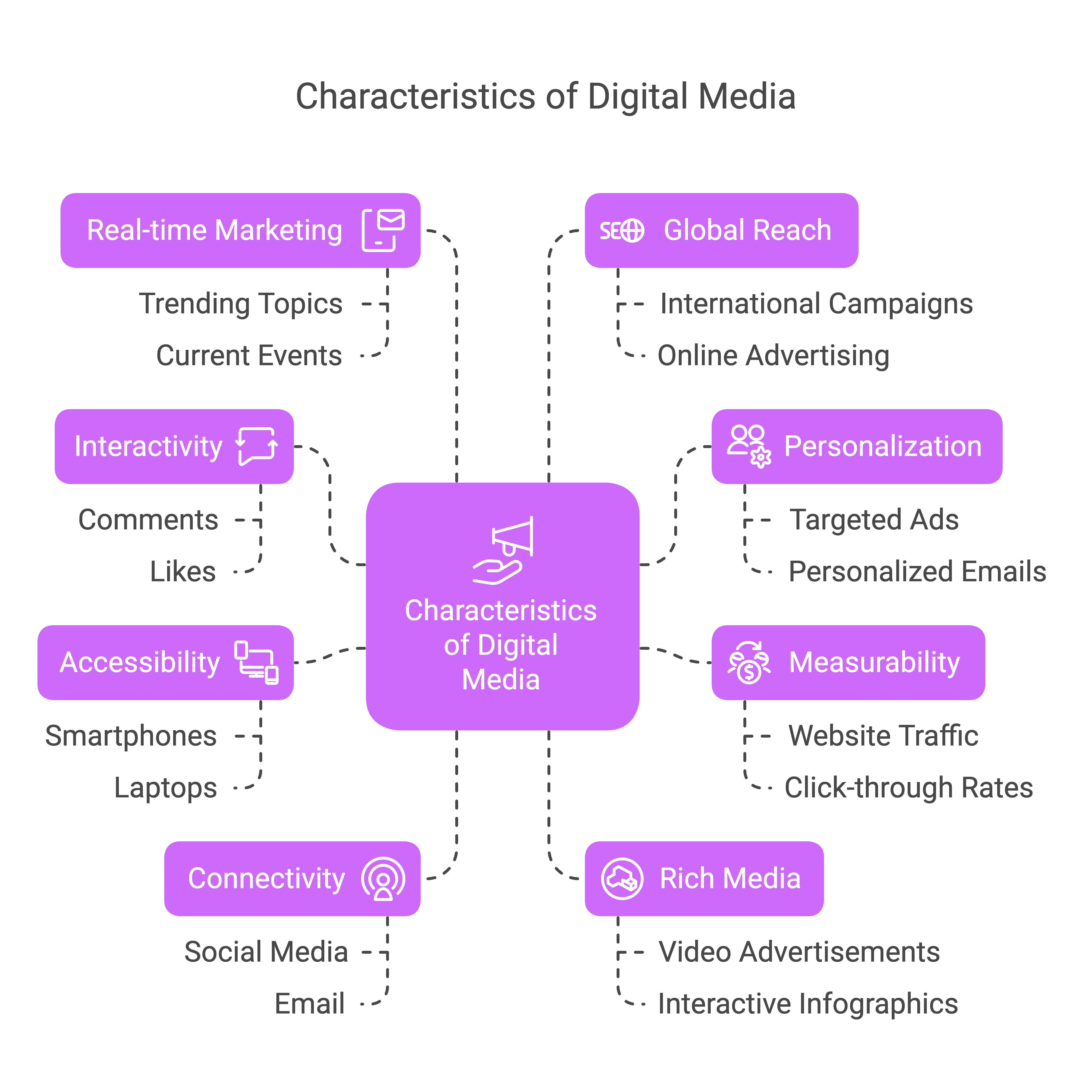Introduction: The characteristics of digital media
Introduction
Digital media has revolutionized how we communicate, consume information, and interact with brands. Planning effective campaigns in this dynamic environment requires a deep understanding of its unique characteristics.
The Characteristics of Digital Media
Digital media, unlike traditional media, offers several distinct features that impact campaign planning. Here's a breakdown:
- Definition: Digital media allows for two-way communication and user engagement.
- Explanation: Users can interact with content through comments, likes, shares, polls, quizzes, and more. This fosters a sense of community and allows for real-time feedback.
- Example: Social media platforms where users can comment on posts or participate in live Q&A sessions.
2. Personalization:
- Definition: Digital platforms enable tailored content and experiences based on user data.
- Explanation: Through data collection and analysis, marketers can deliver personalized ads, recommendations, and content that resonate with individual users.
- Example: Targeted ads on e-commerce websites based on browsing history or personalized email marketing campaigns.
3. Measurability:
- Definition: Digital campaigns offer detailed analytics and metrics to track performance.
- Explanation: Marketers can measure various metrics, such as website traffic, click-through rates, conversions, and engagement, allowing for data-driven optimization.
- Example: Using Google Analytics to track website visitor behavior and campaign performance.
4. Accessibility:
- Definition: Digital content is readily available across various devices and platforms.
- Explanation: Users can access information and engage with brands anytime, anywhere, through smartphones, tablets, laptops, and other connected devices.
- Example: Mobile-friendly websites and apps that provide seamless user experiences.
5. Connectivity:
- Definition: Digital media facilitates seamless communication and information sharing.
- Explanation: Social media, email, and messaging platforms enable users to connect with each other and with brands, fostering online communities.
- Example: Using social media platforms to build brand communities and engage with customers.
6. Rich Media:
- Definition: Digital platforms support diverse media formats, including text, images, audio, and video.
- Explanation: Marketers can leverage rich media to create engaging and immersive content that captures user attention.
- Example: Video advertisements on YouTube or interactive infographics on websites.
7. Real-time Marketing:
- Definition: The ability to react to current events and trends in real time.
- Explanation: Digital media allows for immediate responses to changing market conditions, news, or customer feedback.
- Example: Brands responding to trending topics on Twitter or creating timely social media content related to current events.
8. Global Reach:
- Definition: Digital platforms transcend geographical boundaries, enabling global campaigns.
- Explanation: Marketers can reach audiences worldwide through online advertising, social media, and other digital channels.
- Example: Running international advertising campaigns through Google Ads or social media.
Key Points to Remember:
- Understanding these characteristics is essential for developing effective digital media campaigns.
- Digital media's dynamism requires continuous adaptation and optimization.
- Data-driven decision-making is crucial for maximizing campaign ROI.
- Digital media campaigns can be very targeted, allowing for increased ROI.
- Digital media allows for instant feedback from your consumer base.


No Comments